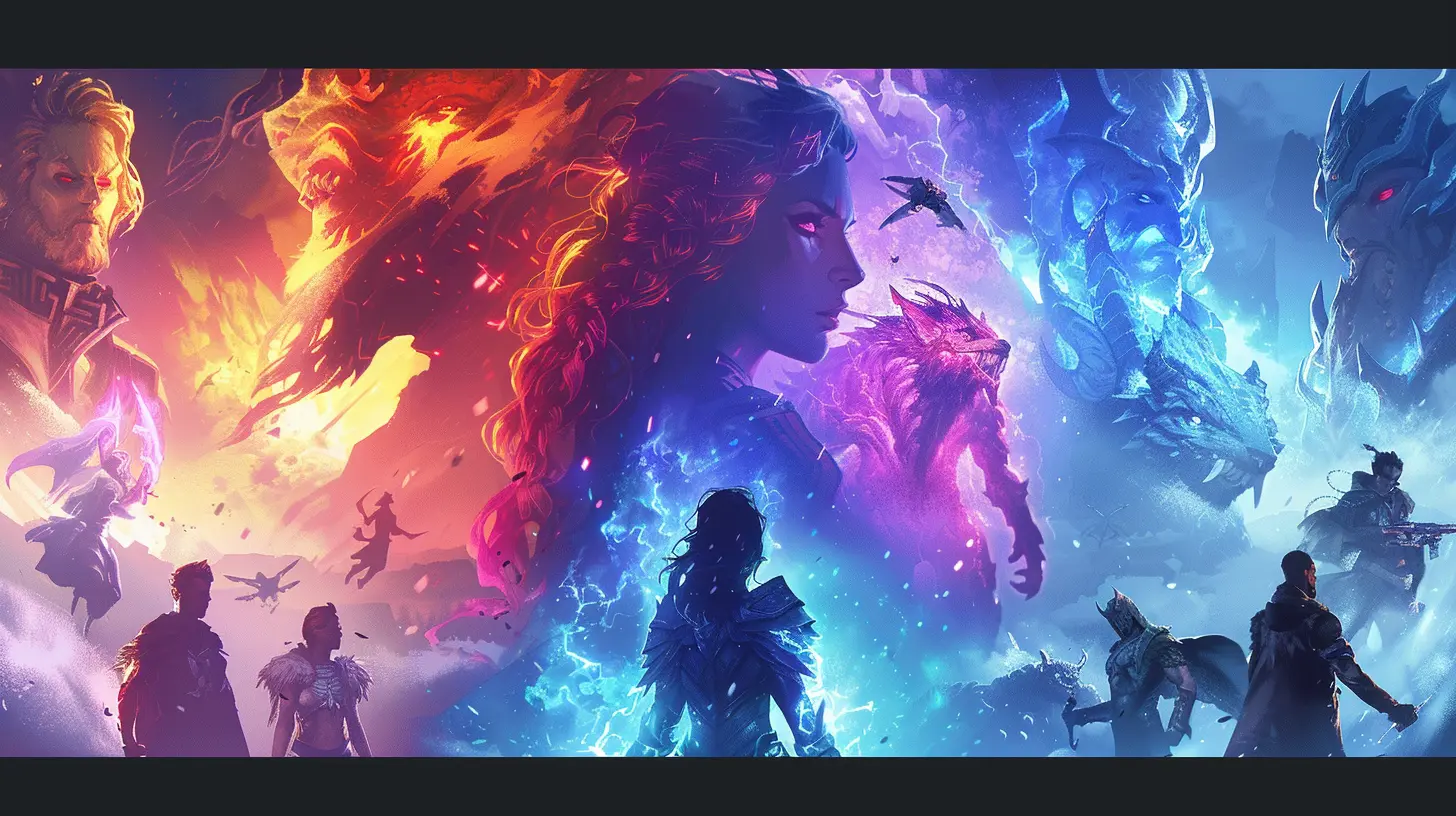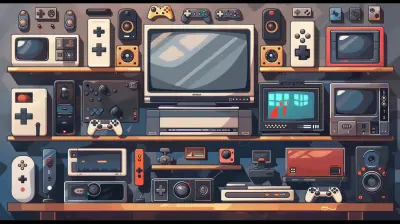2 February 2025
Game distribution has come a long way since the early days of physical cartridges and disks. Remember when you had to rush to your local game store, crossing your fingers that the latest title was still in stock? Feels like a lifetime ago, doesn’t it? Nowadays, with digital distribution taking over, gaming is as easy as a few clicks and a decent internet connection.
One major player that shook things up was the Epic Games Store (EGS). Ever since it launched in December 2018, the EGS has been a hot topic in the gaming world. Love it or hate it, Epic has undoubtedly shifted the landscape of game distribution. But how, exactly? Let’s dive deep into how game distribution evolved post-EGS and what it means for developers, gamers, and the industry as a whole.
The Era Before the Epic Games Store
Before the Epic Games Store came into the picture, Steam pretty much ruled the digital game distribution space. Sure, there were competitors like GOG (Good Old Games), Origin, and Uplay, but let’s be real—they didn’t pose much of a threat to Steam’s dominance. Steam was the go-to platform for buying, downloading, and managing PC games. It had the trust of the community, an extensive library of games, and features like community forums, cloud saves, and achievements. Steam was the king, sitting comfortably on its throne.For developers, the platform was both a blessing and a curse. Steam gave them access to millions of potential customers—but at a cost. Steam’s 30% revenue cut was a hefty price to pay, especially for indie developers. And while Steam’s discovery algorithms were decent, smaller games often fell into the abyss of obscurity.
Players, on the other hand, benefited in terms of convenience. All your PC games in one library? Perfect. Frequent sales offering ridiculous discounts? Even better. But looking back, Steam was monopolizing the market, and maybe, just maybe, it needed a little competition to spice things up.
Enter the Epic Games Store
When Epic Games Store launched, it didn’t just quietly enter the room—it kicked the door down. One of the first things everyone noticed was its ridiculously developer-friendly revenue split. While Steam was taking a 30% cut, Epic came in like a generous friend at dinner, demanding only 12%. That was massive. For developers, this meant more cash in their pockets, and for smaller studios, it was the difference between surviving or going under.And let’s not forget Epic’s aggressive approach to exclusivity deals. They waved their Fortnite-sized wallet in front of developers and publishers, securing exclusive rights to major titles like Metro Exodus, Control, and Borderlands 3. Sure, this irked a lot of gamers. People weren’t thrilled about being “forced” to use a new launcher, especially when they were so comfortable with Steam. But from a business standpoint? It was genius.
Free Games: The Ace Up Epic’s Sleeve
One of Epic’s smartest moves was its weekly free games. Seriously, who doesn’t love free stuff? From indie gems like Celeste to heavy hitters like Grand Theft Auto V, Epic’s free game program drew millions of users to its platform. It was like a magnet—people showed up for the freebies and stuck around to see what else the store had to offer.This tactic worked so well that by 2022, Epic reported over 230 million users on its platform. Talk about making an entrance, huh? And while Steam still holds more users overall, Epic’s rapid growth cannot be ignored.
A New Wave of Competition
So, how did other platforms react to this shakeup? For one, Steam started to feel the heat. They introduced new features, revised their revenue share model slightly (although still not as low as Epic’s), and even improved their library and discovery tools. It’s like watching two rival pizza places battle it out with better deals and toppings.Other platforms like GOG, EA Play, and Ubisoft Connect also had to step up their game. GOG leaned heavily into its DRM-free philosophy, enticing players who wanted a more consumer-friendly approach. EA and Ubisoft put more emphasis on subscription-based models, with EA Play and Ubisoft+ offering access to their entire game libraries for a monthly fee.
Epic’s arrival wasn’t just a splash in the pond—it was a cannonball. It created ripples that forced everyone to adapt or risk being left behind.
The Rise of Launcher Fatigue
Now, let’s talk about the dark side of all this competition—launcher fatigue. Remember the good ol’ days when you could manage your entire PC library within one platform (ahem, Steam)? Well, those days are gone. The rise of platforms like EGS, GOG, Origin, Battle.net, and countless others means gamers now need to juggle multiple launchers.Want to play Fortnite? Fire up the Epic Games Launcher. Fancy some The Sims? Better load up Origin. Oh, and don’t forget Cyberpunk 2077—you’ll need GOG for that. It’s like having a TV remote, but every button opens a different streaming service. Annoying, right?
Launcher fatigue is a real thing, and while competition is great for innovation, it’s not so great for convenience. This is one area where the gaming industry still needs to figure out a balance. Until then, we’re stuck with a cluttered desktop of launchers.
Cloud Gaming Enters the Chat
While digital distribution was evolving, another disruptor quietly entered the scene—cloud gaming. Services like GeForce Now, Xbox Cloud Gaming, and Google Stadia (RIP) offered a completely different way to access games. Instead of downloading and installing them, you could stream them directly from the cloud.This tied neatly into the evolution of game distribution. Gamers now had even more options, whether it was buying titles outright, subscribing to services, or streaming games on the go. And while cloud gaming hasn’t fully replaced traditional distribution (yet), it’s another sign that the industry is anything but stagnant.
The Bigger Picture: What It Means for Gamers and Developers
So, where does all this leave us? For gamers, the evolution of game distribution means more choices—and more headaches. Sure, we’re spoiled with regular sales, free games, and a variety of platforms to choose from, but managing multiple accounts, launchers, and subscriptions can be exhausting. It’s like standing in front of a buffet with too many options—great in theory but overwhelming in practice.For developers, though, this is a golden era. The rise of EGS and other platforms has given them more leverage. Platforms are competing for their games, and that means better deals, more visibility, and higher revenue shares. Indie developers, in particular, are reaping the benefits. They’re no longer relying on a single platform to keep their dream alive.
The Future of Game Distribution
Looking ahead, the evolution of game distribution doesn’t seem to be slowing down. Epic has already hinted at expanding its store's features, and who knows what new players might enter the arena? Maybe we’ll see more subscription services, a unified launcher (please?), or even further advancements in cloud gaming.One thing’s for sure: the days of Steam’s monopoly are over. The competition sparked by the Epic Games Store has created an ecosystem where innovation thrives. And while it’s not perfect, it’s certainly more exciting than it was a decade ago.
So, next time you fire up your launcher of choice, take a moment to appreciate just how far we’ve come. From physical cartridges to the cloud, the evolution of game distribution has been one wild ride—and it’s far from over.








Jett Forbes
Game distribution: evolving faster than my gaming skills!
April 3, 2025 at 5:08 AM